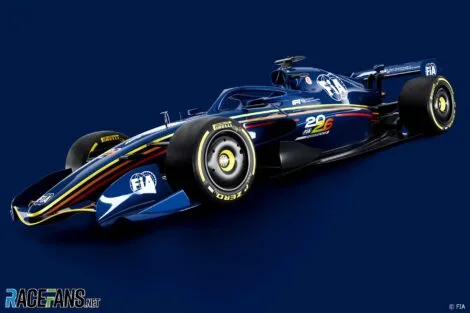Formula 1 will add more powerful and sophisticated active aerodynamics to its cars as part of its new technical regulations.
Although F1 cars have long used active aero in the shape of DRS, in its new form the concept will no longer be used as an overtaking aid. Drivers will be able to lower their front wings as well as their rear wings from 2026.
The FIA has chosen to allow greater use of active aero in order to maintain something close to typical F1 performance levels after switching to power units which rely more on electrical energy than today.
In the current V6 hybrid turbos which have been in used since 2014, around 80% of the power comes from the internal combustion engine, with the electrical systems making up the rest. In 2026 the split will be near to 50-50.
A new aerodynamic philosophy was therefore needed, as the FIA’s head of aerodynamics Jason Somerville explained: “If you were to drop the 2026 power unit into a current car, given the underlying drag level, the energy required to push the car through the air is rather high, and that wouldn’t be very well aligned with the characteristics of the power unit. We would end up with a severe drop-off in speed on the typical main straights.
“So the focus for 2026 aerodynamically has been to reduce the base level of drag of the car, while trying to maintain a good level of downforce in the corners, and that’s led us towards active aerodynamics.”
The cars will have two states: ‘Z-mode’ and ‘X-mode’. In ‘Z-mode’ the front and rear wings are closed and the car generates maximum downforce for cornering. In ‘X-mode’ the drivers can open the flaps at the front and rear to reduce drag and increase their speed.
Advert | Become a RaceFans supporter and
To achieve the desired gain in speed from ‘X-mode’, the FIA found it needed to increase the drag-reducing power of the rear wing beyond what it currently allows through DRS. The 2026 rear wings will have “more moving elements, which move to a greater degree,” said Somerville.
But when it simulated this more powerful rear wing switch, drivers found it tipped the car’s handling balance so far forwards it became too difficult to control. The FIA therefore decided to make the front wing adjustable too, through two moveable elements.
“From our simulation work with the teams and their drivers, as soon as you have a rear wing that moves to…
Click Here to Read the Full Original Article at RaceFans…

